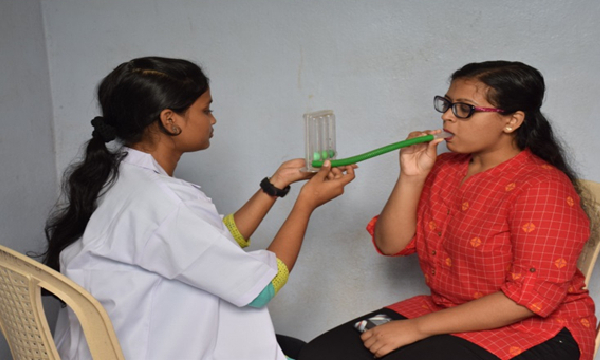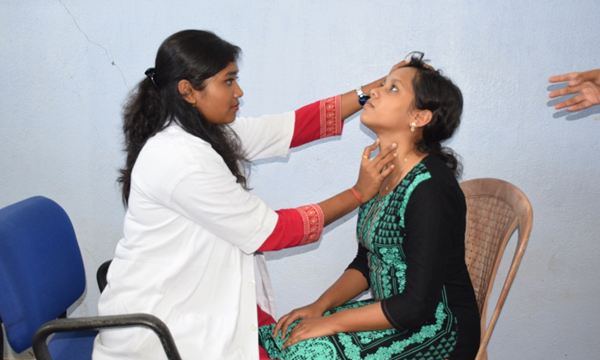A well monitored medical programme called pulmonary rehabilitation helps patients with lung illnesses breathe and live more comfortably. For those with specific lung disorders such COPD, asthma, pulmonary hypertension, and cystic fibrosis, pulmonary rehabilitation makes it easier to breathe and improves quality of life. Additionally, it can enhance everyday living for those who suffer from scoliosis or other medical conditions that impair lung function.
Programmes for pulmonary rehabilitation are appropriate for those who are breathless and have a mild, moderate, or severe chronic lung illness. One to two exercise sessions per week are included in pulmonary rehabilitation programmes, which last six to eight weeks.
The objectives of pulmonary rehabilitation are to promote functional independence, decrease symptoms, impairment, and handicap in those with lungs illness, develop muscular strength and endurance, and assist in controlling anxiety and depression.
Patient Assessment Nutritional Counselling.
Weight Management Rehabilitation.
Psychosocial Management Rehabilitation.
Physical Activity Training.
Exercise Training.

PHASE -1 :- This phase gets started in a hospital. The evaluation of the patient's current state and motivation for rehabilitation come first. It could involve strolling and easy workout.
PHASE -2 :- When a patient's health is stable and they are ready to leave the hospital. During this phase, they continue their pulmonary rehabilitation on a daily basis from home to the outpatient clinic. This phase, which can run up to 10 to 12 weeks, provides information on where to begin an exercise programme.
PHASE -3 :- This stage assists in becoming more autonomous and in charge of one's own fitness regimen. It offers mild surveillance together with medical and therapeutic assistance.
Shortness Of Breathe.
Wheezing.
Chest Pain.
Lack Of Energy.
Chronic Cough Produce Mucus.
Weight Loss.
Fever.
Swelling In Ankle, Feet, Legs.
Decrease breathlessness by 65%.
Boost ability and quality of life even in people with severe impairments.
Decrease health care cost.
Increase ability to come out from mechanical ventilation.
Reduced exacerbation post pulmonary rehabilitation.
Helps to relieve and control breathlessness.
Helps to improve airway compression.
Helps to increase the strength and range of hands and legs.
Helps to clear the lung secretion.
Helps to improve trunk flexibility.
Prior to prescribing medication and oxygen support, a thorough examination should be performed for medical and physical diagnosis. This is known as preventive care (smoking cessation, appropriate hydration, proper diet, etc.). The patient's family members should also be educated on the disease, its effects, and possible treatments.
Exercise prescription, supervision, and result measurement are all crucial tasks performed by physiotherapists. Training for physical activity should involve both progressive resistance training and supervised aerobic exercise. Goals should be developed and agreed upon, and exercise should be recommended individually based on the first evaluation. Exercise effort should be periodically assessed, with a focus on any chest pain, discomfort, or dyspnea. In comparison to standard treatment, patients who engage in both functional and maximal exercise following pulmonary rehabilitation exhibit statistically significant benefits.
The patient can be helped by nutritional counselling to make sure they are getting the necessary nutrients in the right proportions. If you want to gain muscle, a nutritionist could suggest a weight-loss strategy, nutritional supplements, or medications. Chronic obstructive pulmonary disease (COPD) patients have everyday symptoms, decreased activity tolerance, and vulnerability to exacerbations, which lowers their quality of life in terms of their health. Exercise limitation is one of the most common problems for Chronic Obstructive Pulmonary Disease patients and this may be compounded by reduced muscle mass and malnutrition. Some COPD patients may have weight loss and skeletal muscle atrophy, which impairs functional capacity and quality of life by causing muscular weakness and dysfunction.
Patients with Chronic Obstructive Pulmonary Disease may experience severe symptoms whether they are overweight or underweight. People who are overweight must use more energy to maintain their health, which necessitates using more oxygen. A person who is underweight may experience increased fatigue since the body does not get enough energy from food. It may become more difficult to breathe properly as a result of the person's respiratory muscles becoming weaker. The individual may become more lethargic and less energetic as a result.

Margdarsi provide multimodal therapy under one roof.
Margdarsi provide develop knowledge, attitudes and skills among students to respond to poverty/literacy/poor rehabilitation resource availability in the communities.